
How to Use VS1838B IR Receiver: Examples, Pinouts, and Specs
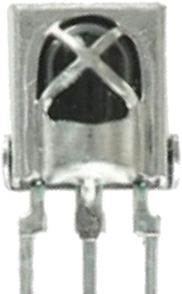
 Design with VS1838B IR Receiver in Cirkit Designer
Design with VS1838B IR Receiver in Cirkit DesignerIntroduction
The VS1838B IR Receiver is an electronic component designed to receive and decode infrared (IR) signals transmitted by remote controls. This receiver is widely used in various applications, including televisions, air conditioners, fans, and other household appliances, as well as in DIY projects involving microcontrollers like the Arduino.
Explore Projects Built with VS1838B IR Receiver
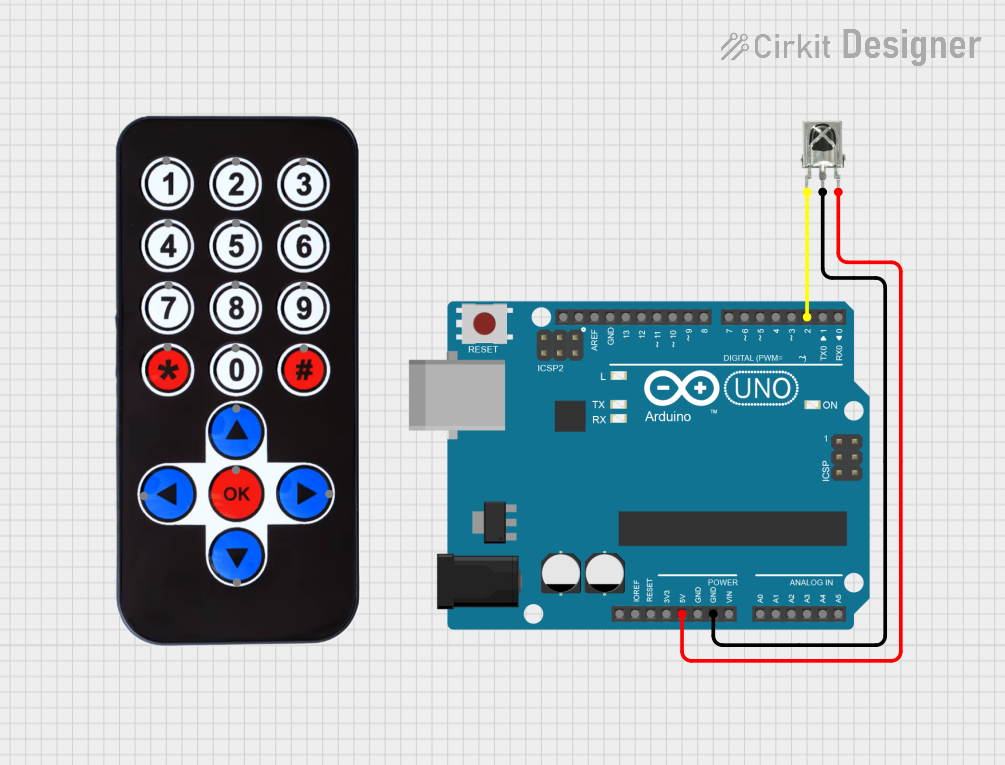
 Open Project in Cirkit Designer
Open Project in Cirkit Designer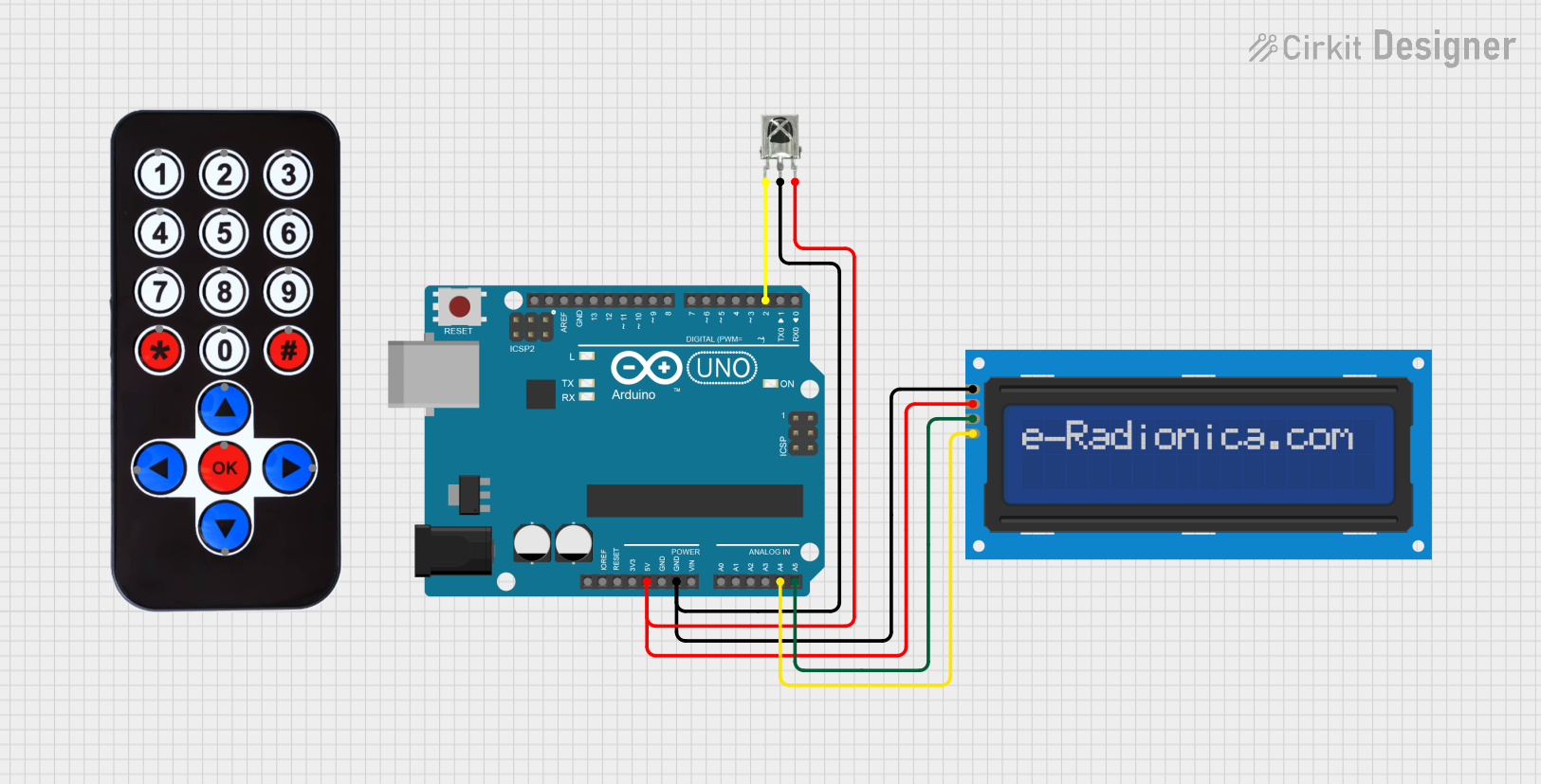
 Open Project in Cirkit Designer
Open Project in Cirkit Designer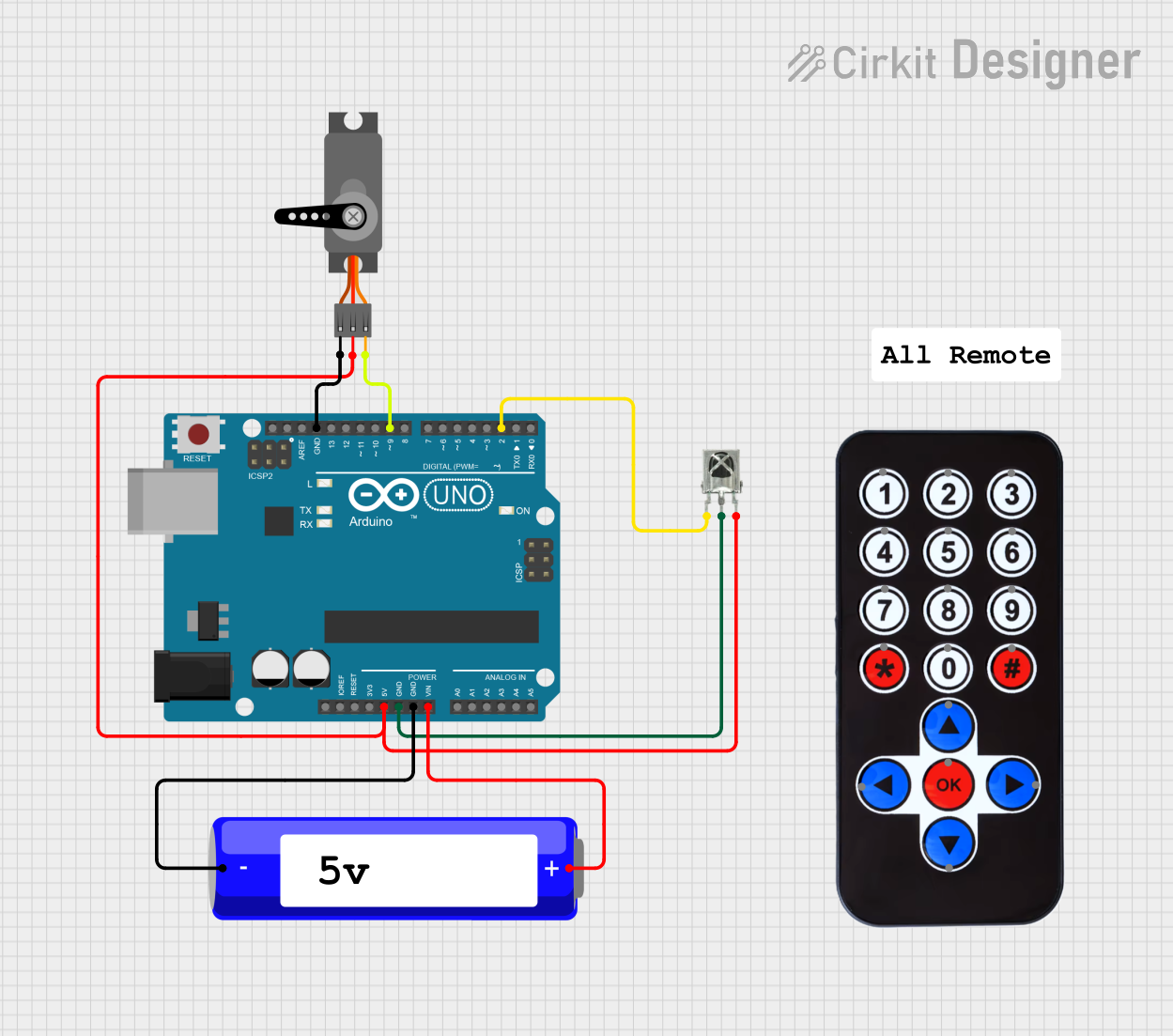
 Open Project in Cirkit Designer
Open Project in Cirkit Designer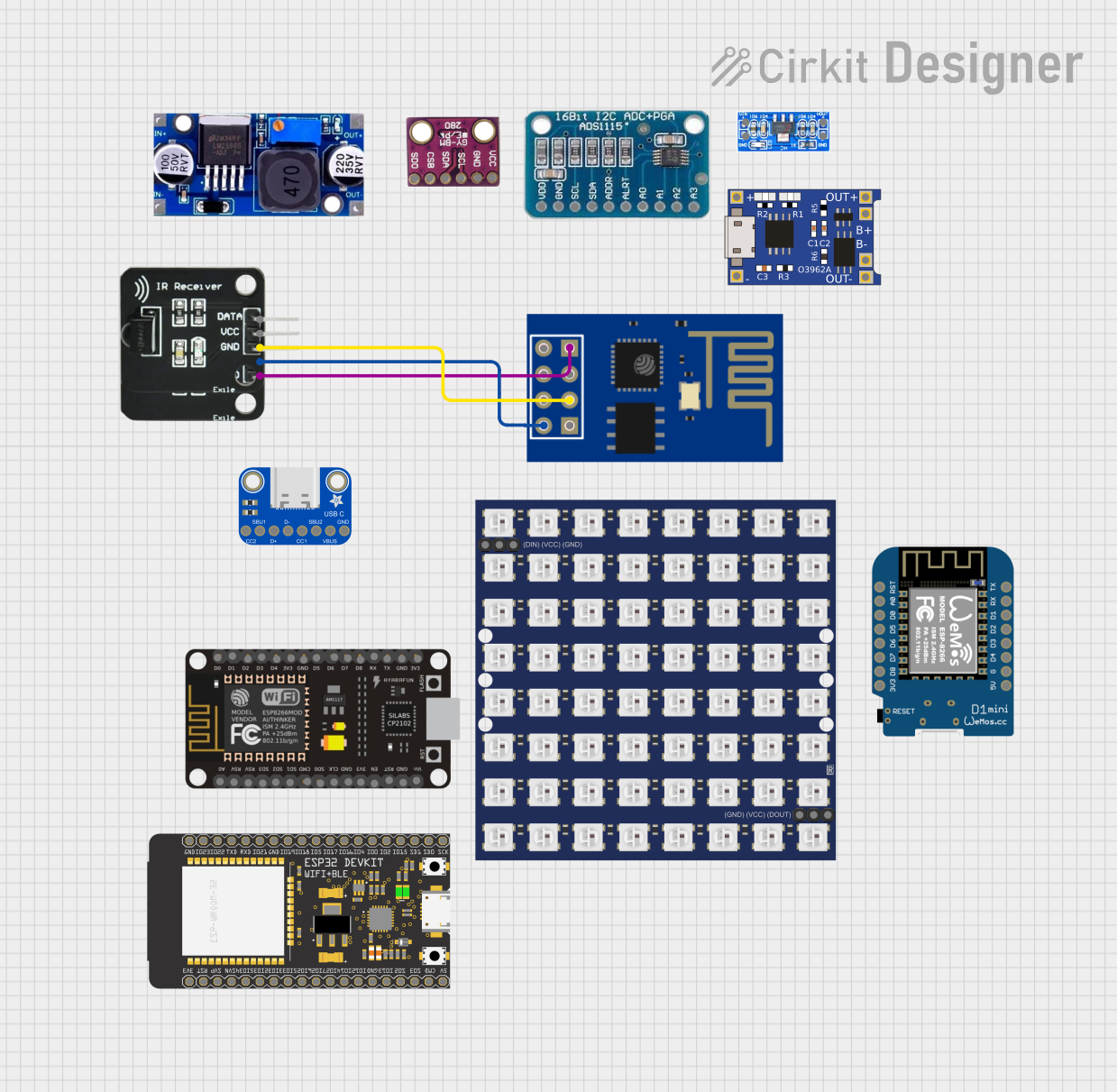
 Open Project in Cirkit Designer
Open Project in Cirkit DesignerExplore Projects Built with VS1838B IR Receiver

 Open Project in Cirkit Designer
Open Project in Cirkit Designer
 Open Project in Cirkit Designer
Open Project in Cirkit Designer
 Open Project in Cirkit Designer
Open Project in Cirkit Designer
 Open Project in Cirkit Designer
Open Project in Cirkit DesignerTechnical Specifications
Key Technical Details
- Supply Voltage (Vcc): 2.7V to 5.5V
- Operating Current: 0.4mA to 1.5mA
- Carrier Frequency: 38kHz
- Reception Distance: Up to 18 meters
- Reception Angle: ±45 degrees from the axis
- Operating Temperature: -25°C to +85°C
Pin Configuration and Descriptions
| Pin Number | Name | Description |
|---|---|---|
| 1 | OUT | Output signal (active low) |
| 2 | GND | Ground connection |
| 3 | Vcc | Supply voltage |
Usage Instructions
Connecting the VS1838B to a Circuit
- Connect the Vcc pin to a 5V power supply.
- Connect the GND pin to the ground of the power supply.
- Connect the OUT pin to a digital input pin on a microcontroller, such as an Arduino.
Best Practices
- Place the IR receiver away from direct sunlight and fluorescent lights to avoid interference.
- Use a current-limiting resistor if the supply voltage is greater than 5V.
- Keep the IR receiver away from heat sources to prevent damage.
Example Code for Arduino UNO
#include <IRremote.h>
const int IR_PIN = 11; // Connect the OUT pin of VS1838B to pin 11 of Arduino
IRrecv irrecv(IR_PIN);
decode_results results;
void setup() {
Serial.begin(9600);
irrecv.enableIRIn(); // Start the receiver
}
void loop() {
if (irrecv.decode(&results)) {
Serial.println(results.value, HEX); // Print the received IR code
irrecv.resume(); // Receive the next value
}
}
Troubleshooting and FAQs
Common Issues
- No signal is being received: Ensure that the IR receiver is properly connected to the power supply and the microcontroller. Check for any obstructions between the remote control and the receiver.
- Intermittent signal reception: This could be due to interference from ambient light sources. Try shielding the receiver or reducing the room lighting.
- Short reception range: Make sure that the power supply is stable and within the specified voltage range. Also, check for any physical damage to the receiver.
FAQs
Q: Can the VS1838B be used with any IR remote control? A: The VS1838B is designed to work with most IR remote controls that transmit at a 38kHz carrier frequency.
Q: What should I do if the VS1838B gets hot during operation? A: The VS1838B should not get hot during normal operation. If it does, immediately disconnect the power and check for any issues with the power supply or connections.
Q: How can I extend the reception range of the VS1838B? A: Ensure that the receiver is not obstructed and is placed away from interference sources. Also, using a higher quality IR remote control with a stronger signal can help extend the range.
Remember to follow all safety guidelines when working with electronic components and ensure that all connections are secure before powering up the circuit.